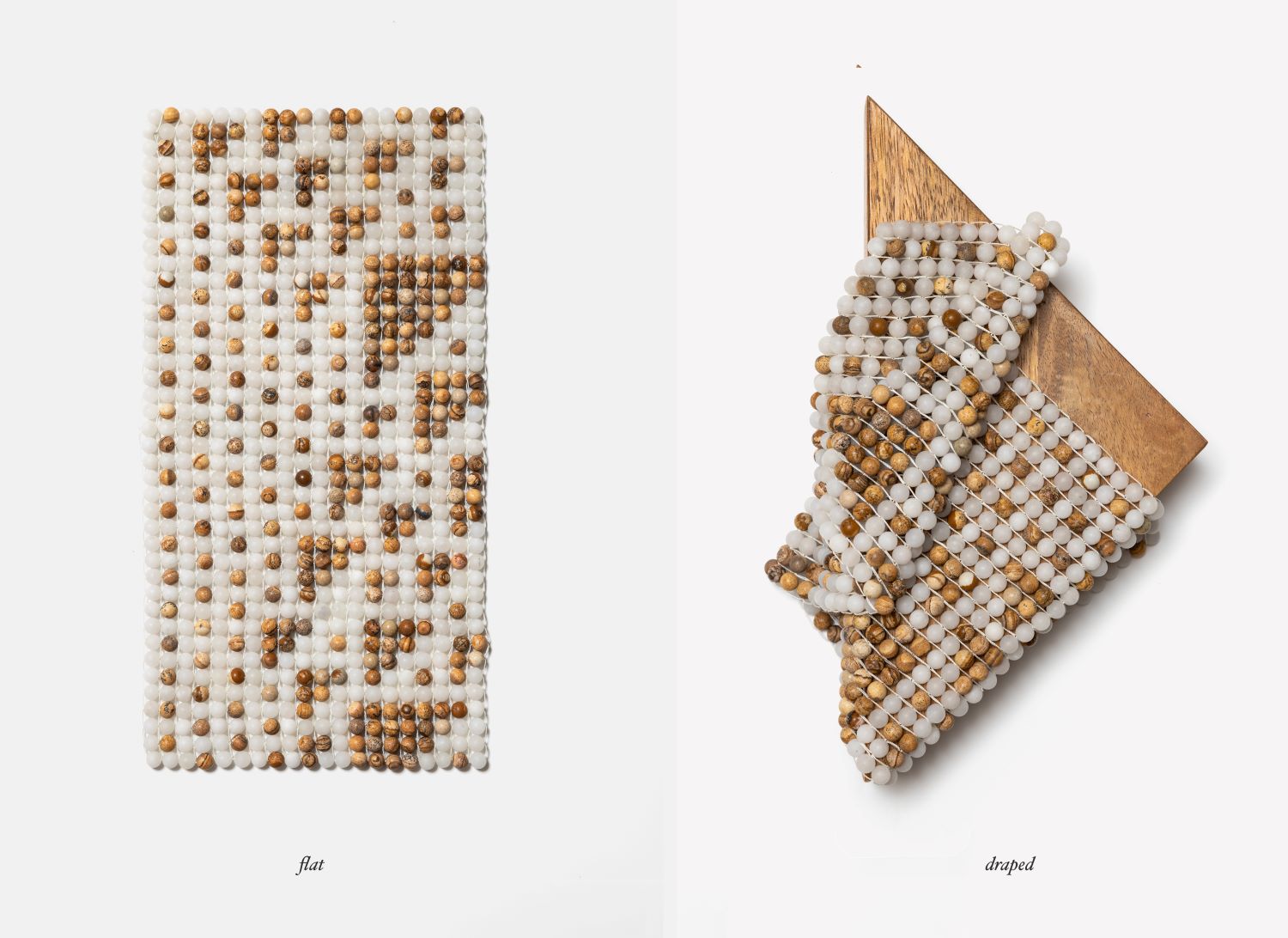2024 Best in Fiber Arts – Samantha Giffith

Rule 110
Beads/beaded piece, jasper and white jade
Abstract
Rule 110 is a beaded art piece depicting the elementary cellular automation algorithm of the same name. Cellular automata, the algorithm on which Conway’s Game of Life is built, is significant for its ability to model a range of complex behaviors. As defined by Steven Wolfram and Matthew Cook, rule 110 is unique among cellular automata due to its proven universality and Turing completeness. Depicted here in beads of jasper and white jade, the rule enters the third dimension as a weighty fabric, connecting the worlds of scientific computation and organic elegance.
Wolfram’s cellular automata Rule 110 holds significant scientific importance, as it is the simplest known universal Turing-complete system. It can emulate any arbitrary computer program when given adequate time and space, exhibiting complex behavior and demonstrating the potential for simple rules to produce intricate patterns and behaviors. Matthew Cook’s 2004 proof of its Turing-completeness solidified its importance in computational theory, making it a fundamental example in the study of computational universality and the nature of computation itself. Its properties have implications for various fields including computer science, mathematics, physics, and even biology, offering us insights into the behavior of complex systems.
Utilizing traditional craft techniques to illustrate computational concepts allows viewers to bridge the gap between abstract theoretical frameworks and tangible, experiential understanding. It allows for the exploration of complex geometries, organic patterns, and emergent behaviors in a tangible, visceral manner, offering new perspectives on the interplay between algorithms and the physical environment. Pieces like Rule 110 not only enrich our scientific understanding of complex concepts, but cultivate a deeper appreciation for the interconnectedness of science, culture, and human creativity.
